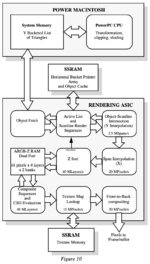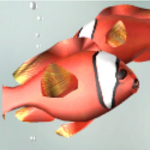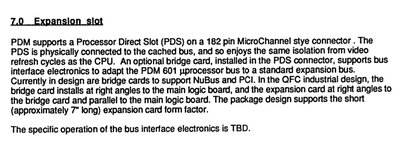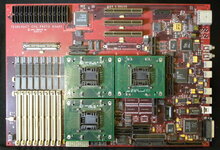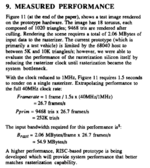Ooooooo, nice and thank you for the benchmarks. I wish I would have bought one a bit ago (while they were cheap and plentiful). Did you manage to overclock the card (if i'm reading the benchmarks right)?
Yes. I overclocked from 40 to 50MHz and then to 54MHz. 54MHz was not stable, though. The SRAM is 15ns and capable of around 45MHz based on specs from the data sheet. One of the two cards I have can only do 44Mhz but the other the aforementionedcard can do 50-54. I think that faster Sram would allow around 60MHz with a heatsink and fan. At 50MHz the chips need a small heatsink to stay cool.
From the QD3D accelerator patents:
The 512K texture memory can be expanded to a 36bit data path since the corresponding pins are still on the ASIC but not connected. A texture would have 18bit (262K colors) instead of 16bit (32K colors). The ASIC may contain additional address lines as well but I am a bit hesitant to modify the cards. The patents describe the texture index to be only 4bit (16 textures) which would make any memory expansion irrelevant. The card can store 12 128x128 textures or 3 256x256 textures with its 512K ram.
An earlier iteration of the card could access 2Mb of Dram as well as 131K cache. The Prototype was described in 1991 patents. It did not have texturing ability at that time. Texturing seems to be a bit of an afterthought and was seemingly quickly implemented. The texturing unit does not support alpha bits or color keying. That means a texture can either be solid or see-through with an alpha-value from the vertex. No fog of effects are supported. it has trilinear filtering, though. The development at Apple began in 1986/87 and resulted in the
"White Magic" prototype in 1990/91. This prototype might have used multiple render-pipelines to archive around 880 KPoly/s. This card would most likely have been used in a Quadra 700 with a NuBus Interface. It featured multiple chips per pipeline and most likely ran at 20Mhz. Four chips would make up a pipeline: The command processor, the Z-chip, the RGB-chip and a separate gate-array that processed control-tokens into commands: 4-stages. White Magic was not capable of texturing.
Around 1994 a shift to PCI would have occurred and work on the texturing unit might have started. The codename of this prototype was
"Gotham" in 1994/95. It was originally intended to use Dram but the complexity of a dram-controller with caching for the needed speed was too complicated to the short development time. They went with a 512K cache-like ram as a compromise and slashed the memory controller. The limit of 4bit texture-index is described in a 1995 patent as well as a lot of hardware-anomalies found on the QD3D accelerator.
In 1997 the last iteration on the 3D-accelerator was prototyped. This card would have archived 100 MTex/s and 2 MPoly/s with support for up to 64Mb SDRam texture memory per pipeline. 4 pipelines could have been combined with a frontend-processor which would have up to 64Mb of object SDRam available. The frontend-processor would most likely allow triangle setup and some form of T&L (like the GLINT Delta).
Steve Jobs killed all projects that were not directly connected to either computer- or OS development as he was brought back to Apple. The Apple Advanced Technology Group was closed around October 1997. Most of the 3D Developers were already working at their new employers at that time (3Dfx, Bungee, SGI).
All of the stuff I said can be found in SIGGRAPH proceedings and patents.
-Jonas



